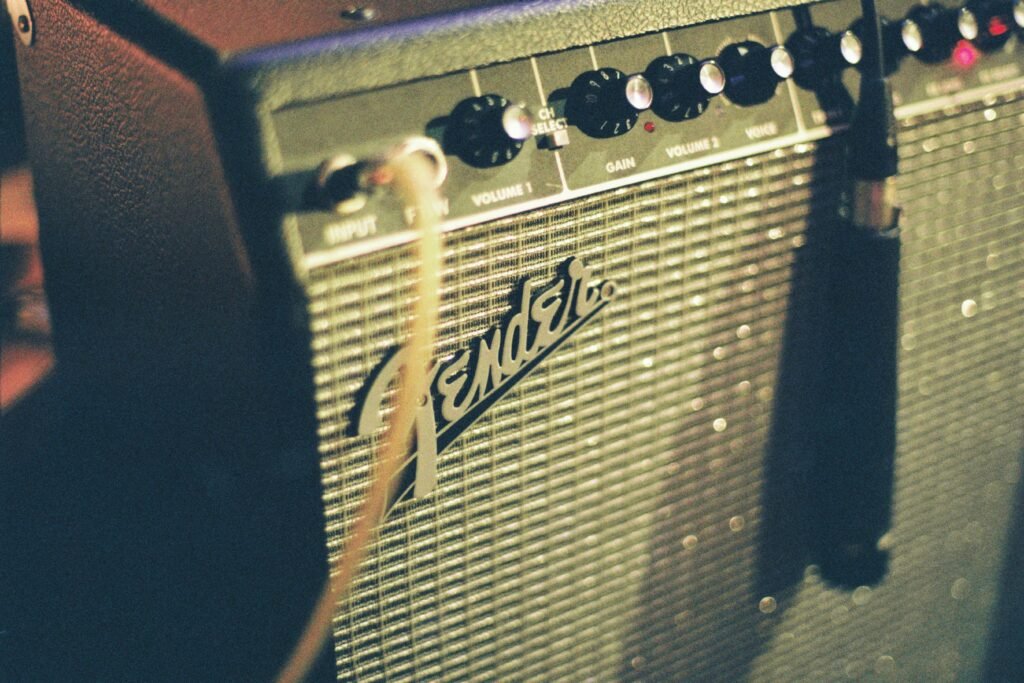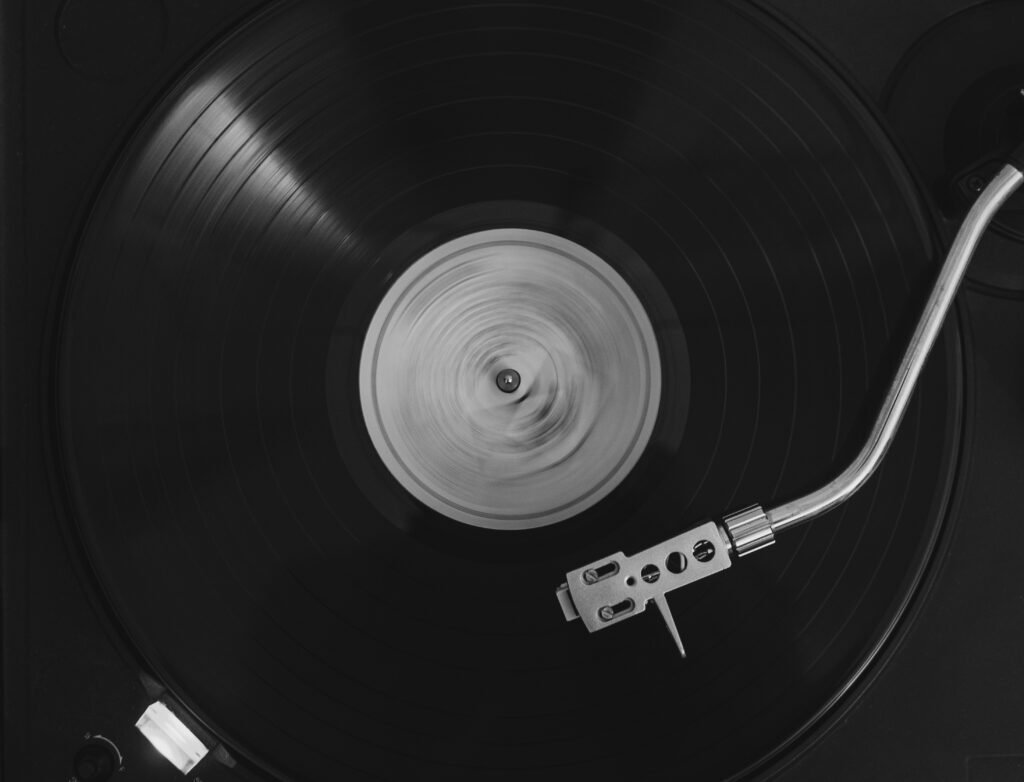By the time White Chalk was released in 2007, PJ Harvey had already proven herself as an artist who thrives on change. Her past records moved through raw rock, haunting blues, and polished alternative styles. Each new project felt like a deliberate turn, not just in sound but in spirit. With White Chalk, she took one of her most surprising steps yet.
This album breaks away from her usual guitar-heavy sound. Instead, Harvey leans into piano-led arrangements and sings in a higher, almost ghostly register. It’s a sharp contrast to the earthy grit of Uh Huh Her just a few years earlier. Yet despite the change in instruments and tone, the themes aren’t unfamiliar. White Chalk still wrestles with solitude, memory, and the weight of the past — but now it does so with quiet intensity.
Sonic Exploration

White Chalk trades PJ Harvey’s familiar raw rock sound for something far more restrained and spectral. From the first notes, it’s clear the album leans into minimalism. The production is delicate, almost skeletal, allowing space for silence and subtle details to shape the emotional tone. Rather than sounding lo-fi, the mix is crisp and intimate. Every creak of piano pedal or breath feels intentional, creating a sense of closeness, as if Harvey is performing just a few feet away. This level of clarity supports the album’s ghostly mood, inviting the listener to lean in rather than be overwhelmed.
Musical Arrangements
The arrangements are striking in their simplicity. Piano dominates the record, even though Harvey has said she was not especially trained on the instrument. That inexperience lends the playing a certain vulnerability, with simple patterns and unresolved chords that never quite settle. Strings, autoharp, and sparse percussion fill in the space but never clutter it. Vocally, she sings in a high register that borders on uncomfortable at times, yet this discomfort seems deliberate. The choice heightens the sense of fragility and otherworldliness, though some listeners may find the effect distancing rather than immersive.
In terms of genre, White Chalk is hard to pin down — it draws from gothic folk, chamber music, and art pop, with traces of classical influence. There’s little of the alternative rock edge that defined much of Harvey’s earlier catalog. Instead, the album seems to exist in its own strange, timeless world. It’s not a seamless blend of styles, but rather a bold narrowing of focus. Harvey strips away her past sounds to create something more introspective and stark.
While the production choices are bold and often beautiful, they also limit the album’s dynamic range. The atmosphere can feel uniform across tracks, and the lack of contrast may leave some listeners craving more movement or variation. Still, there’s no denying the clarity of vision in how the sound supports the themes of loss, memory, and emotional unease.
Lyrical Analysis

At the heart of White Chalk lies a collection of lyrics that feel haunted and hushed, like memories whispered from another room. The central themes revolve around loss, isolation, death, and the eerie presence of the past. Harvey doesn’t offer full narratives or grounded stories; instead, she builds impressions — fragments of longing, regret, and displacement that never quite resolve.
Across the album, recurring motifs emerge. Ghosts, chalk, bones, and landscapes carry symbolic weight, all pointing to a blurred line between the physical world and something beyond it. “Grow Grow Grow” draws from folk and fairy tale imagery to express a desire for renewal, while “White Chalk,” the title track, focuses on the land itself — a chalky, pale English countryside that becomes a metaphor for time and memory eroding into nothing.
Lyrical Depth
The lyrics lean toward the abstract and poetic rather than straightforward storytelling. Harvey often uses simple language, but with careful placement and rhythm. There’s a sense that every word is weighed and chosen with intention. This restraint gives the lyrics a stark beauty, though some listeners may find the lack of clear narrative frustrating. Lines like “White chalk hills are all I’ve known” resonate deeply not because they tell a story, but because they conjure an image that feels ancient, sad, and oddly specific.
Emotionally, the lyrics do not aim for catharsis. Instead, they evoke a quiet, aching kind of reflection. There is little comfort or resolution here. That sense of emotional distance may limit how deeply some connect with the material. Yet for others, the ambiguity allows for a more personal reading — one where the silence between the words carries just as much meaning as the words themselves.
Cohesion and Flow

White Chalk is an album that feels carefully constructed, not just in sound but in structure. From start to finish, the tracks unfold with a sense of restraint and measured pacing. There is no single moment that feels out of place or disruptive, and each song flows into the next with a quiet, almost ritualistic calm. This consistency creates a meditative listening experience, though it may also risk blending the songs too closely together for some.
The album doesn’t follow a clear narrative arc, but there is a subtle emotional progression. Early tracks like “The Devil” and “Dear Darkness” introduce a tone of unease and inner turmoil. As the album continues, that unease deepens into something more sorrowful and resigned, with tracks like “Broken Harp” and “Before Departure” suggesting a surrender to grief or detachment. The closing song, “The Mountain,” feels like a final release — both musically and emotionally — with Harvey’s voice reaching its most fractured and bare. It’s not a resolution in the traditional sense, but it closes the record with a sense of finality.
Thematic Consistency
Thematically, White Chalk holds firm. It remains anchored in its exploration of isolation, decay, and the eerie beauty of forgotten things. The style is unwavering, too. From production to performance, Harvey sticks to a sparse, piano-led palette. There are no sudden stylistic detours or jarring shifts in tone. This commitment adds to the album’s power as a unified piece of work, though it also means there are fewer moments of contrast or surprise to break the spell.
Standout Tracks and Moments
While White Chalk thrives on subtlety and mood, a few tracks manage to stand out through their emotional intensity or striking simplicity.
The Devil
“The Devil” is an immediate highlight, setting the tone with unsettling piano lines and sparse production. Harvey’s high-pitched vocals feel almost possessed here, giving the track a haunted energy that lingers. The line “Come here at once” repeats with a quiet urgency, drawing the listener into a strange, inner world that the rest of the album expands upon.
Grow Grow Grow
“Grow Grow Grow” also stands apart. Its use of folk-inspired melody and whispered vocals creates a feeling of eerie innocence. The song plays like a lullaby for something long gone, and its circular structure gives it a hypnotic quality. The imagery of growth contrasts with the album’s heavier themes of decay, offering a subtle tension that adds depth.
White Chalk
The title track, “White Chalk,” is perhaps the album’s most emotionally resonant. Built around a delicate piano motif and a sparse arrangement, it captures the album’s themes in their purest form. Harvey sings, “White chalk hills are all I’ve known,” with a sense of quiet resignation. It’s a moment where simplicity meets power, and the atmosphere speaks as loudly as the words.
Memorable Moments
One of the album’s most memorable moments comes in “Broken Harp,” a brief but powerful track where Harvey sings over what sounds like a broken, detuned instrument. The harshness of the sound contrasts sharply with her fragile vocals, creating a raw and unsettling effect that encapsulates the emotional risk of the whole record.
Artistic Contribution and Innovation

White Chalk holds a unique place not only in PJ Harvey’s discography but also within the broader landscape of early 2000s alternative music. At a time when indie rock was leaning into expansive production and upbeat experimentation, Harvey chose to strip everything back. The album resists easy classification, falling somewhere between gothic folk, chamber pop, and avant-garde singer-songwriter traditions. In that sense, it doesn’t sit neatly within a single genre — instead, it exists on the fringes, carving out a quiet but distinct space.
In terms of artistic risk, the album stands as one of Harvey’s boldest moves. She abandoned the guitar almost entirely, leaned into her inexperience with piano, and sang in a register that challenged both her voice and the listener’s expectations. These choices may not seem radical on the surface, but in context — especially following the gritty Uh Huh Her — they mark a significant pivot. The shift was not done for spectacle, but rather as a way to reset her creative process and pursue a more introspective sound.
The innovation lies not in flashy production or genre fusion, but in the way Harvey uses restraint as a tool. Her use of silence, repetition, and space is striking. Few artists in her position would risk so much quiet. The minimalism here is purposeful, not passive — every note, every breath feels considered. This approach invites a slower, more patient kind of listening that was unusual for mainstream or even alternative releases of the time.
Closing Thoughts

White Chalk is one of PJ Harvey’s most quietly daring works — not because it is loud or confrontational, but because it deliberately avoids those things. It trades the physical power of her earlier albums for something ghostlier and more psychological. The result is a sparse, inward-looking record that offers a deeply atmospheric listening experience, if not an immediately accessible one.
The album’s strengths lie in its cohesion, its emotional precision, and its commitment to an unusual artistic vision. The minimalist production, eerie vocal style, and recurring lyrical motifs all work together to create a haunting mood. For listeners willing to engage with its slow pace and subtlety, White Chalk can be powerfully affecting.
However, its narrow emotional and sonic range can also feel limiting. The lack of variety in dynamics and tone may cause some tracks to blur together, and Harvey’s high, strained vocals — while thematically fitting — won’t appeal to everyone. It’s a record that asks for patience and a certain openness, rather than delivering immediate rewards.
As a whole, White Chalk stands as a bold and introspective detour in Harvey’s catalog. It may not be her most universally loved album, but it remains one of her most intriguing. It proves that artistic growth doesn’t always require expansion — sometimes, the most radical act is to quiet everything down.
Official Rating: 7/10
This score reflects an album that is artistically rich and emotionally resonant, but also challenging in ways that may limit its reach. It’s not flawless, but it’s the kind of risk that keeps PJ Harvey’s work vital and unpredictable.
